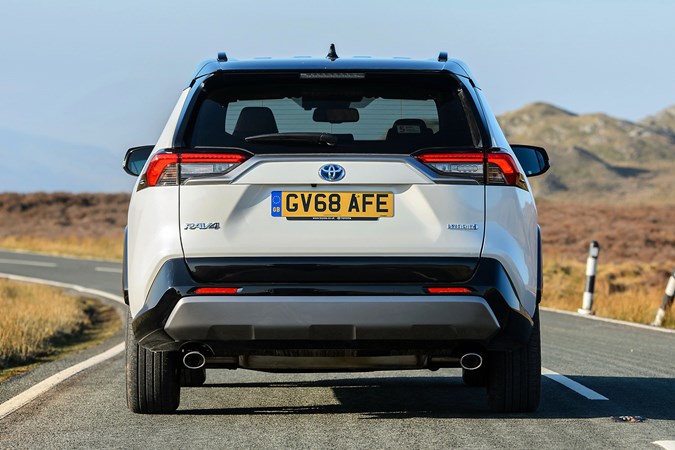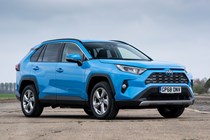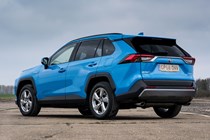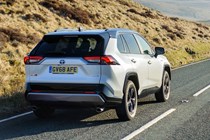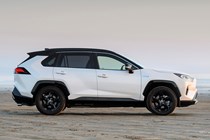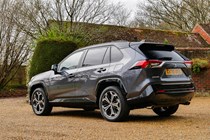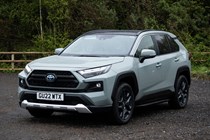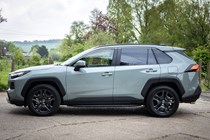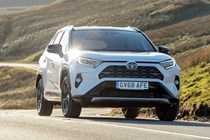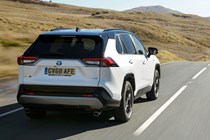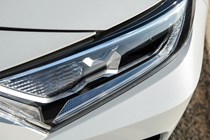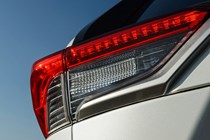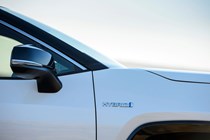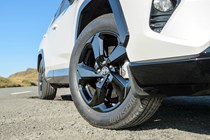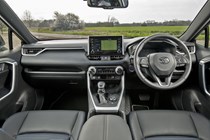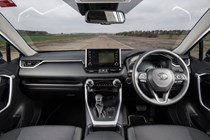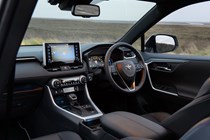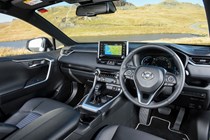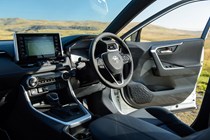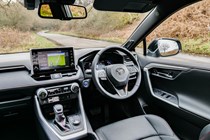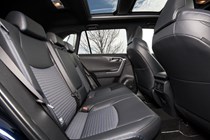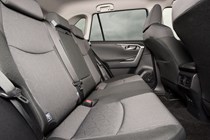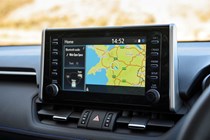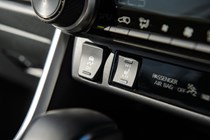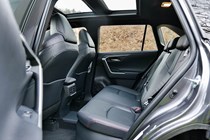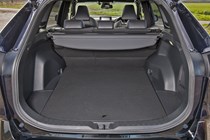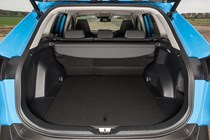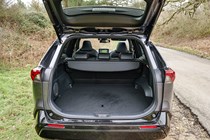Toyota RAV4 interior, tech and comfort
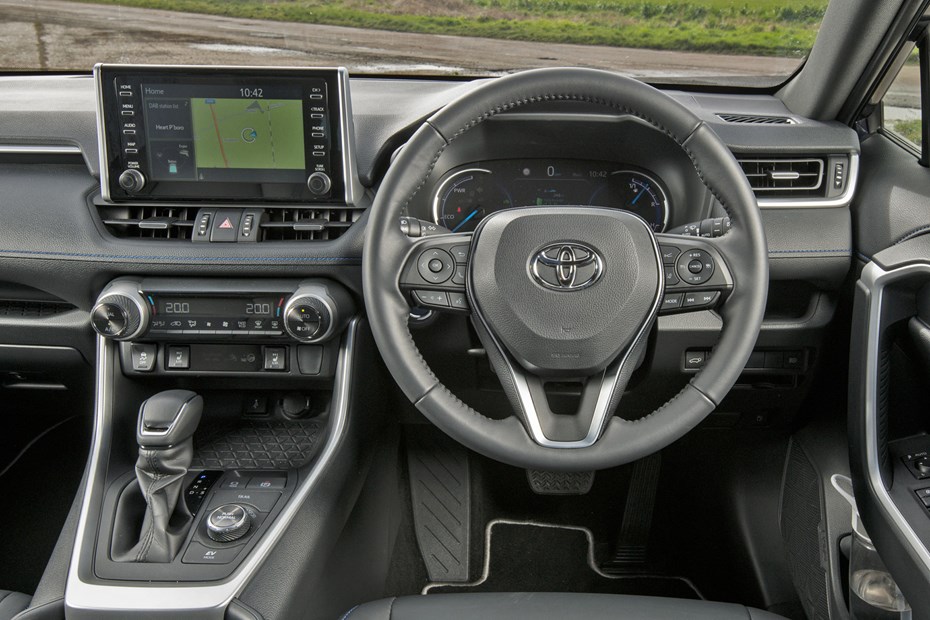
- Solidly built cabin
- Lacklustre infotainment system
- Smartphone connectivity a recent addition
How is the quality and layout?
The RAV4’s cabin is a definite improvement over the previous model, although we appreciate that wasn’t a hard target to beat. You get a larger central touchscreen, a partly digitised dashboard and surprisingly comfortable seats. Like most modern Toyotas, the RAV4’s cabin also feels very well-built. It isn’t littered with premium materials, but you get the impression that it’ll stand the test of time.
The plug-in hybrid model improves on this further. Toyota added some more sound deadening and upgraded the front side windows to the same kind of “acoustic glass” that you find on luxury cars. Why did Toyota bother? Because the PHEV has such a long electric range, you’ll spend a lot of time driving around with a silent petrol engine, which means things like wind- and road-noise will be much more noticeable.
Infotainment and tech
Apple CarPlay and Android Auto smartphone connectivity comes as standard on all trim levels. This is a good thing, because it means you can avoid using Toyota’s own in-house system the second you jump behind the wheel.

It would have been fine in a brand-new car five years ago, but it looks very dated alongside the slick interfaces offered in the Hyundai Tucson and Kia Sportage. The built-in sat-nav system is at least well-informed – it warned us of every single speed camera we passed during our time with it.
Comfort
- Comfortable ride on all models
- Seats are squashy yet supportive
- Hybrid is louder than Plug-in Hybrid
Drive the RAV4 just a few hundred yards, and you’ll quickly figure out that it’s geared for comfort over sportiness. Unlike some rival models, the RAV4 has the same suspension set-up regardless of trim or drivetrain, so comfort is consistent across the range.
The suspension remains composed over the vast majority of road surfaces at any speed short of warp drive. Motorway expansion joints can unsettle the chassis and larger potholes can send shudders into the cabin, but that’s nothing out of the ordinary when compared to the RAV4’s rivals.
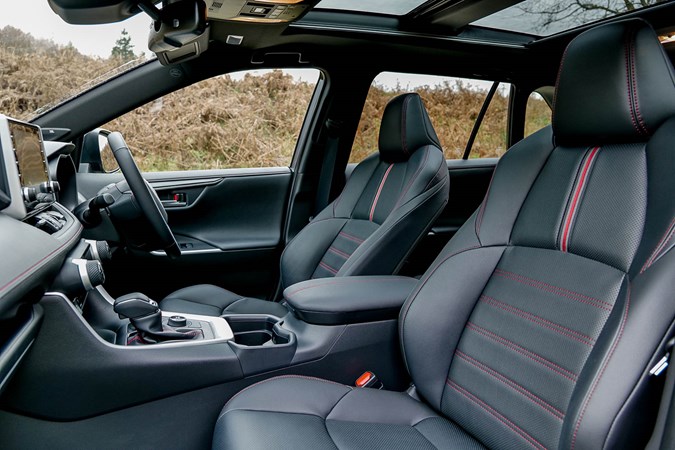
The RAV4’s hybrid engine makes quite a bit of noise when accelerating hard – more so than in some equivalent petrol or diesels. It’s not the only issue either, as wind noise is very pronounced. Get up to motorway speeds and you’re sure to notice it, especially when cruising along with low engine revs. Thankfully, tyre noise is kept well in check.
As mentioned above, the PHEV is a much more pleasant place to be thanks to the extra sound deadening. The engine also works less often and less hard, which means less racket in the cabin. If you don’t put your foot down regularly and keep the car plugged in at home, you may forget it has an engine at all.
The seats – even those on entry-level models – offer a nice balance between support and comfort, with things only improving as you move up the range. Unlike some rivals (such as the smaller Suzuki S-Cross), the RAV4 also has a good lumbar support setting.
